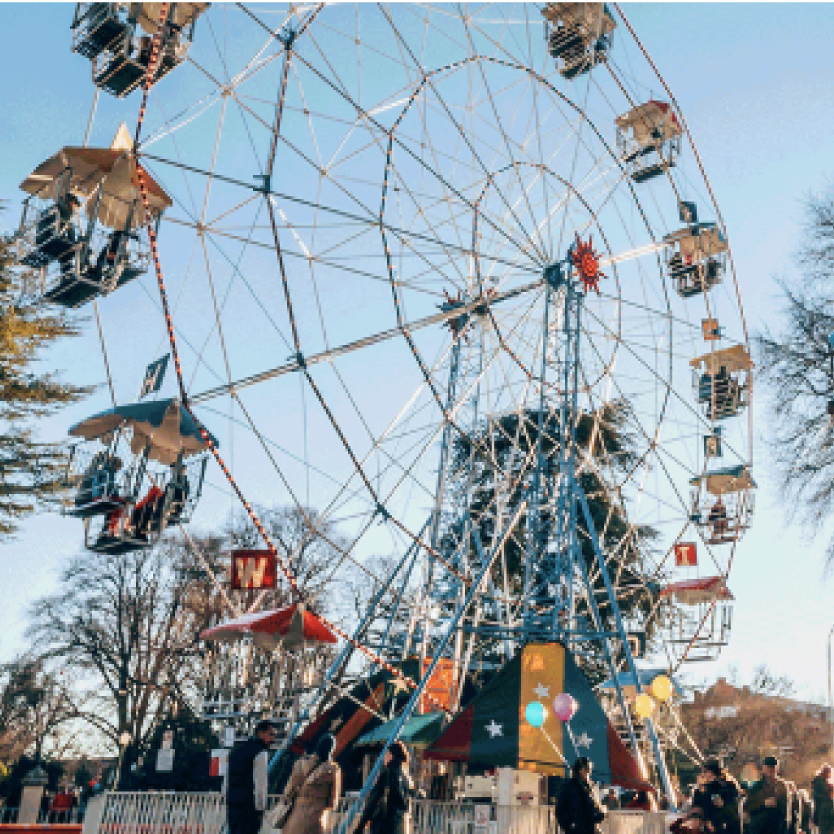The Ferris wheel and the Rollercoaster are the most famous carnival fair rides. But what about the bumper cars? The carousel, the mechanical bull, the Wipeout, the scrambler or the tamer rides with shorter lines and relaxed height restrictions? All of these are popular carnival fair rides. Some of them are unique, and some have been copied for decades. So how many classic amusement rides have you been on? Today’s blog will present the origin of the top 7 carnival fair rides.
1. The Rollercoaster
A popular misconception is LaMarcus Thompson was the first person to create a rollercoaster. However, this is not true. Yes, the first patent went to him in 1885, but the modern-day rollercoasters are a replica of the “Russian Mountains”, also known as the winter sled rides popular in the 17th century. Meanwhile, a Pennsylvanian mining company created a “gravity railroad” to move coal. However, on the slow working days, they charged the “thrill-seekers” to take it for a spin.
2. Ferris Wheel
The Ferris Wheel was created in 1893 during the World’s Columbian Exposition in Chicago – that’s what George Washington Gale Ferris Jr. said. However, one year ago, three-wooden wheels were designed by William Somers. Each wheel measured 50 feet in diameter in New Jersey and New York. Both owed a debt to a similar but awkwardly named wooden “pleasure wheel” invented in the 17th century in Bulgaria.
3. Carousel
The carousels with wooden horses were the first to offer horseback riding lessons for the Turkish and Arabian cavalry members. When the crusaders returned to Europe, they brought the device along them. The spinning attraction became popular in France, where 17th-century riders wanted to pierce a target while going at high speed. The best part was the power source, the actual horses for carnival fair rides.
4. The Mechanical Bull
Until the 1970s, mechanical bulls were only used to train rodeo competitors and cowboys. The early practice bulls used to be large barrels suspended from four ropes. People could jostle the barrels using a pulley or tug on the ropes. The mechanical version became more popular by a Texas businessman who wanted to make the bars more and more popular.
5. The Wipeout
This giant revolving ride moves around up and down in a wave-like fashion. Originally, this was a German attraction known as the Trabant. The American innovators brought a better and bigger version stateside, replicated it, and named it the Wipeout – the rest was history if you are at least 48″ tall.
6. Tilt-A-Whirl
It is the ride that caused a thousand stomachaches. The concept originated in the mind of woodworker and waterslide maker Herbert W. Sellner in 1926. This carnival fair ride made its debut at the Minnesota State Fair one year later. The story is such that Sellner experimented with the design of the ride. He placed a chair on the kitchen table and made his son sit on it, and rocked the table. This same ride is presently manufactured in Texas.
7. Wave Swinger
Imagine someone looking at the carousel and thinking that it may be tame. What if the horses are replaced with swings, and the whole thing is raised a hundred feet? Even though the swing rides were popularized in the 1970s, they have been there longer than before. According to the postcards of California’s Idora Park, the wave swinger was discovered as early as 1908.







